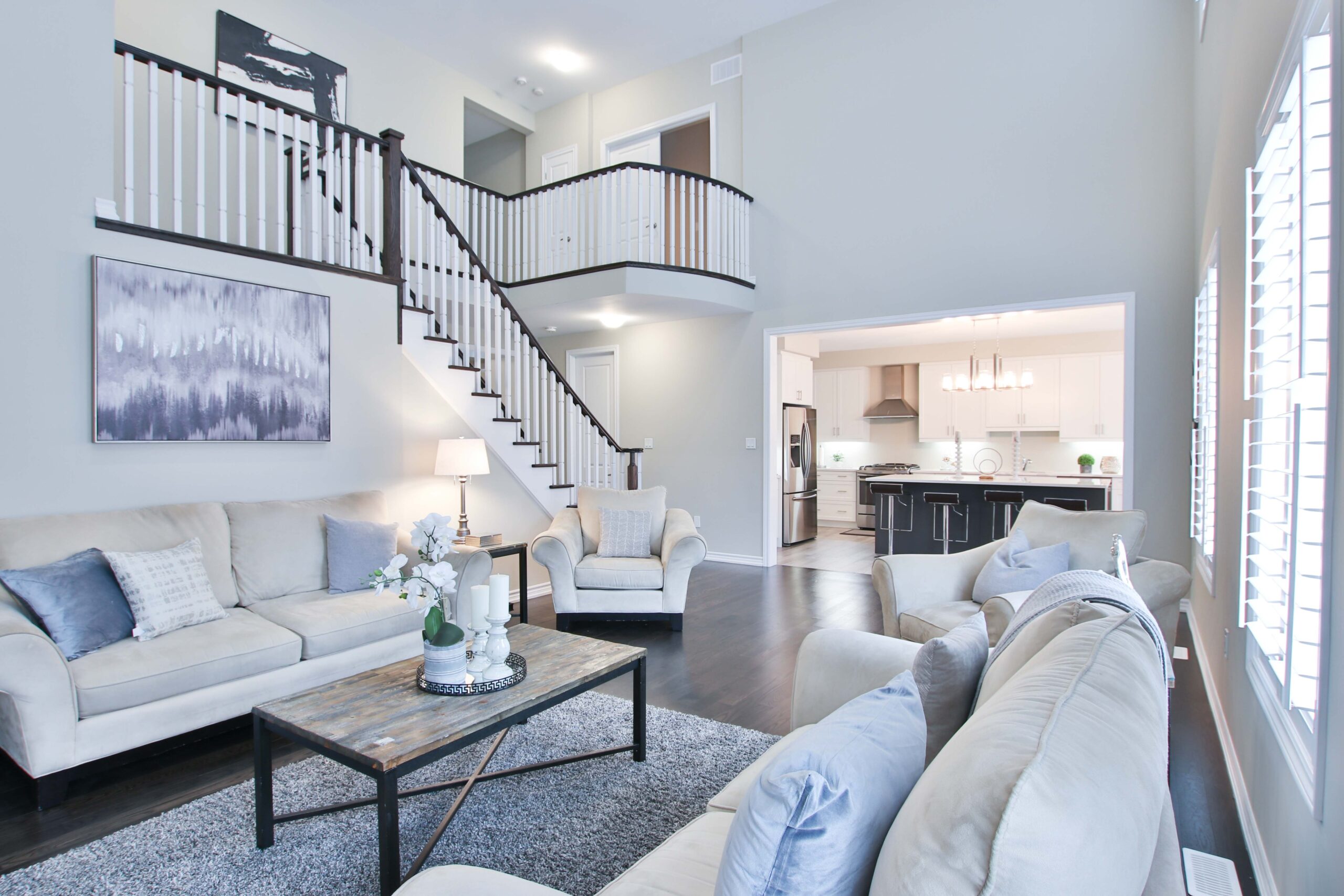You’ve probably heard about the advancements in smart home technology, but have you ever wondered how you can make your very own living room smarter? With the rise of interconnected devices and the increasing popularity of voice-controlled assistants, turning your living room into a smart oasis has never been easier. From voice-activated lighting to smart thermostats and entertainment systems, there are endless possibilities to enhance your living room experience. In this article, we’ll explore some simple yet effective ways for you to transform your living room into a hub of intelligent convenience and comfort. So, get ready to discover the innovative tools and gadgets that will take your living room to the next level!
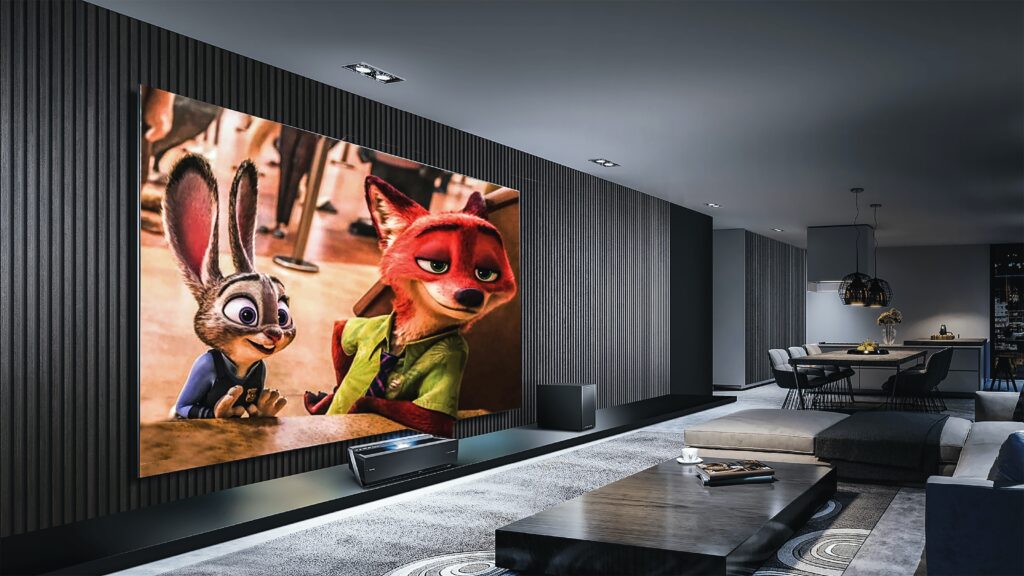
Smart Devices
Voice Assistants
One way to make your living room smarter is by incorporating voice assistants. Voice assistants like Amazon’s Alexa or Google Assistant can be seamlessly integrated into your living room setup, allowing you to control various smart devices simply by using your voice. With a voice assistant, you can ask for information, play music, set timers, control your smart TV or lighting, and even order products online, all from the comfort of your couch. Voice assistants offer a level of convenience and hands-free control that can greatly enhance your living room experience.
Smart TVs
Upgrade your living room with a smart TV. Smart TVs give you access to a world of entertainment, from streaming services like Netflix, Hulu, and Amazon Prime Video to popular apps and games. With built-in Wi-Fi, you can connect your smart TV to the internet and enjoy endless content options. Some smart TVs even come with voice control features, allowing you to search for shows or control settings using just your voice. Additionally, smart TVs often offer seamless integration with other smart devices, making it easier than ever to create a connected living room ecosystem.
Smart Speakers
Smart speakers are another fantastic addition to any smart living room. Whether you opt for a standalone smart speaker like the Amazon Echo or Google Nest Audio, or choose a smart soundbar that combines audio and voice assistant functionality, smart speakers can revolutionize your living room experience. With a smart speaker, you can stream music, ask for the latest news and weather updates, control your other smart devices, and even make hands-free calls. The ability to have a virtual assistant at your fingertips provides a seamless and effortless way to interact with your living room environment.
Smart Lighting
Upgrade your lighting to smart bulbs or smart switches to transform your living room into a modern and efficient space. With smart lighting, you can easily adjust the brightness, color, and ambiance of your living room with just a few taps on your smartphone or using voice commands. Smart lighting also allows you to set schedules and create scenes, enabling you to create the perfect lighting for different activities or moods. Whether you want to dim the lights for a cozy movie night or brighten the room for a gathering with friends, smart lighting offers unparalleled customization and convenience.
Smart Thermostat
A smart thermostat is a must-have for any smart living room. With a smart thermostat, you can easily control the temperature of your living room using your smartphone or voice commands. Set schedules to ensure your living room is always cozy when you arrive home or adjust the temperature remotely if your plans change. Some smart thermostats even utilize sensors to detect if the room is occupied, allowing for more efficient temperature control. By optimizing energy usage, smart thermostats not only enhance comfort but also help save money on your energy bills.
Smart Security Cameras
Enhance the security of your living room with smart security cameras. Place these cameras strategically in your living room to monitor activities and keep an eye on your home, even when you’re away. Smart security cameras typically offer features like live streaming, two-way audio, and motion detection. Some cameras even integrate with other smart devices, such as smart speakers or smart displays, allowing you to view camera feeds or receive notifications directly on your devices. With smart security cameras, you can have peace of mind and ensure the safety of your living room and your entire home.
Smart Blinds
Bring convenience and style to your living room with smart blinds. Smart blinds can be controlled remotely using your smartphone, voice commands, or even automated schedules. Adjust the level of natural light entering your living room with ease, control privacy, and create a comfortable ambiance at any time of the day. With smart blinds, you can enjoy the benefits of natural light while also preserving energy by minimizing the need for artificial lighting and reducing the strain on your heating or cooling system.
Smart Plugs
Transform your ordinary electronics into smart devices with the help of smart plugs. Simply plug your devices into these intelligent outlets, and you’ll be able to control them remotely using your smartphone or voice commands. Smart plugs can turn your living room into a smart hub by allowing you to control everything from lamps and fans to entertainment systems and charging stations. With smart plugs, you can automate routines, set schedules, and even monitor energy usage, all from the palm of your hand.
Smart Home Hubs
Smart home hubs act as the central control center for all your smart devices in the living room and throughout your home. These hubs consolidate all your smart technology into a single interface, making it easier to manage and control your devices. With a smart home hub, you can set up routines and automation, customize settings, and receive notifications all in one place. Some hubs even offer additional features like built-in speakers, touchscreens, and compatibility with multiple smart home platforms. A smart home hub adds a level of sophistication and coordination to your living room ecosystem.
Smart Home Controllers
In addition to a smart home hub, you can also consider using smart home controllers to manage your living room devices. Smart home controllers are usually handheld or wall-mounted devices that provide a convenient and intuitive interface to control and monitor your smart devices. These controllers often come with touchscreen displays and offer visual feedback, making it easy to navigate through settings and make adjustments. By having a dedicated smart home controller for your living room, you can have quick and direct control over your devices without needing to rely on other devices like smartphones or voice assistants.
Home Automation Systems
Smart Home Automation
Smart home automation systems bring together all of your smart devices and allow them to work together seamlessly. These systems take the concept of convenience to the next level by enabling you to set up complex scenarios or routines. For example, you can create a “Movie Night” scene that dims the lights, lowers the blinds, turns on the TV and sound system, and sets the perfect temperature. With smart home automation, you can control multiple aspects of your living room with a single command or tap, creating a truly intelligent and intuitive living space.
Remote Control Systems
Remote control systems add a level of convenience to your living room by enabling you to control your devices from anywhere in the house. With a remote control system, you can use a handheld remote or an app on your smartphone or tablet to adjust settings, change channels, or control audio and video sources without having to be in front of the devices themselves. This allows you to seamlessly navigate through your entertainment options or make quick adjustments without interrupting the flow of your living room activities.
Scene Control Systems
Scene control systems enable you to set up predefined scenes or scenarios for your living room. These scenes can be activated with a single command or tap, and they can involve multiple devices working together to create a specific ambiance or setting. For example, you can have a “Morning” scene that opens the blinds, turns on the coffee maker, and plays your favorite morning playlist. Scene control systems offer a level of convenience and personalization that allows you to have your living room adapt to your needs and preferences effortlessly.
Automated Media Systems
Automated media systems bring your living room entertainment to the next level. These systems integrate multiple devices, such as your TV, sound system, media players, and streaming services, into a cohesive and user-friendly interface. With an automated media system, you can easily browse through your media library, control playback, and switch between different sources without the need for multiple remotes or complicated setups. These systems offer a streamlined and immersive entertainment experience, allowing you to focus on enjoying your favorite shows, movies, or music.
Energy Management Systems
With an energy management system, you can efficiently monitor and control the energy consumption of your living room devices. These systems provide insights into your energy usage and offer tools to help you reduce waste and save money. Energy management systems can analyze patterns and usage habits, allowing you to make informed decisions about adjusting settings or scheduling activities for optimal energy efficiency. By incorporating an energy management system into your living room, you can contribute to a greener lifestyle and reduce your environmental footprint.
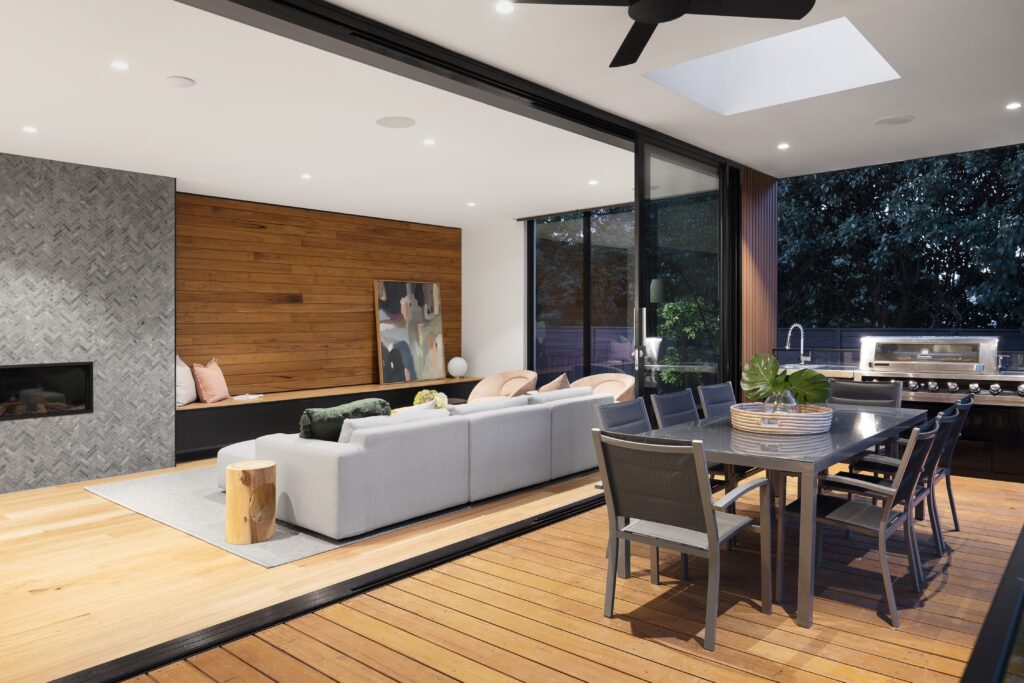
Smart Home Integration
Connectivity and Compatibility
When making your living room smarter, it is essential to consider connectivity and compatibility. Ensure that the smart devices you choose are compatible with each other and can be seamlessly integrated into your chosen smart home ecosystem. Compatibility issues can lead to frustration and limited functionality. It’s also crucial to consider the connectivity options of your devices, such as Wi-Fi, Bluetooth, or Zigbee, to ensure reliable and stable connections. By selecting devices that work well together and offer robust connectivity options, you can create a cohesive and efficient smart living room.
Smart Home Integration Platforms
Smart home integration platforms, such as Amazon Alexa, Google Assistant, or Apple HomeKit, provide a unified control interface for your smart devices. These platforms allow you to connect and manage devices from various manufacturers, ensuring compatibility and ease of control. By choosing a smart home integration platform, you can centralize the management of your living room devices and take advantage of the additional features and functionalities offered by the platform. Whether you’re an Alexa enthusiast, a Google Assistant devotee, or a dedicated Apple user, there’s a smart home integration platform that suits your preferences.
Voice Control
Voice control is one of the most popular and intuitive ways to interact with your smart devices. By using voice commands, you can control your living room devices without needing to reach for a remote or your smartphone. Voice control offers a hands-free and natural way to adjust settings, play music, change channels, or even search for information. With the advancements in natural language processing and voice recognition, voice control has become more accurate and responsive, making it a valuable feature for a smart living room.
App Control
Managing your smart living room devices through dedicated smartphone apps offers a convenient and user-friendly experience. With an app, you can have complete control over your devices at your fingertips. From adjusting lighting settings to setting up automation routines, an app provides a visual interface that allows for easy customization and control. Some apps even offer additional features like energy monitoring, usage statistics, and firmware updates. By using a dedicated app for your smart living room devices, you can have personalized control and access to advanced settings.
Smart Home Networking
To ensure a smooth and reliable smart living room experience, a robust and stable network is essential. Smart home devices rely on networking technology, such as Wi-Fi or Ethernet, to communicate with each other and with your control devices. Strong and consistent Wi-Fi coverage is crucial to avoid connectivity issues or lag when controlling your devices. Consider investing in a quality router or Wi-Fi mesh system to ensure comprehensive coverage throughout your living room. A well-optimized network will help prevent any frustrating interruptions or delays in controlling your smart devices.
Benefits of a Smart Living Room
Convenience and Ease of Use
One of the most significant benefits of a smart living room is the convenience and ease of use it offers. With smart devices and automation, you can seamlessly control various aspects of your living room environment without having to manually adjust settings or juggle multiple remotes. Whether it’s turning on the lights, adjusting the temperature, or starting your favorite TV show, you can accomplish these tasks effortlessly with a simple voice command or tap on your smartphone. The convenience and ease of use provided by a smart living room enhance your overall comfort and make daily tasks more efficient.
Energy Efficiency
A smart living room can contribute to a more energy-efficient home. Smart lighting, thermostats, and power management systems offer tools for monitoring and reducing energy consumption. With smart lighting, you can automatically turn off lights when you leave the room or create schedules to optimize energy usage. Smart thermostats allow for precise control over heating and cooling, ensuring that energy is not wasted when the room is unoccupied. By integrating energy management systems into your living room, you can make tangible contributions to reducing your carbon footprint and enjoy energy savings.
Enhanced Security
Smart security features provide peace of mind and enhance the security of your living room. Smart security cameras can be strategically placed to monitor activities and provide evidence in case of any incidents. Many smart cameras offer features like motion detection, night vision, and cloud storage for recorded footage. Additionally, some smart home integration platforms offer advanced security features, such as door and window sensors, smart locks, and alarm systems. The enhanced security provided by a smart living room adds an extra layer of protection for you and your loved ones.
Improved Entertainment Experience
A smart living room can greatly enhance your entertainment experience. With smart TVs, automated media systems, and voice control, you have easy access to a wide range of content and seamless control over your entertainment setup. Smart TVs offer streaming services, apps, and voice control, allowing you to effortlessly find and enjoy your favorite shows or movies. Automated media systems provide a unified and user-friendly interface, making it easy to navigate through different sources and enjoy a hassle-free entertainment experience. With a smart living room, you can create the perfect ambiance for movie nights, game sessions, or relaxing music sessions with just a few taps or voice commands.
Customization and Personalization
A smart living room allows for customization and personalization to suit your unique preferences. From adjusting lighting colors and brightness levels to creating automation routines, you have complete control over the ambiance and functionality of your living room. Set up personalized scenes for different activities or moods, such as “Reading Mode” or “Party Mode,” and have your living room adapt to your needs with a single command. The ability to customize and personalize your living room provides a level of comfort and control that is unparalleled and adds a touch of individuality to your space.
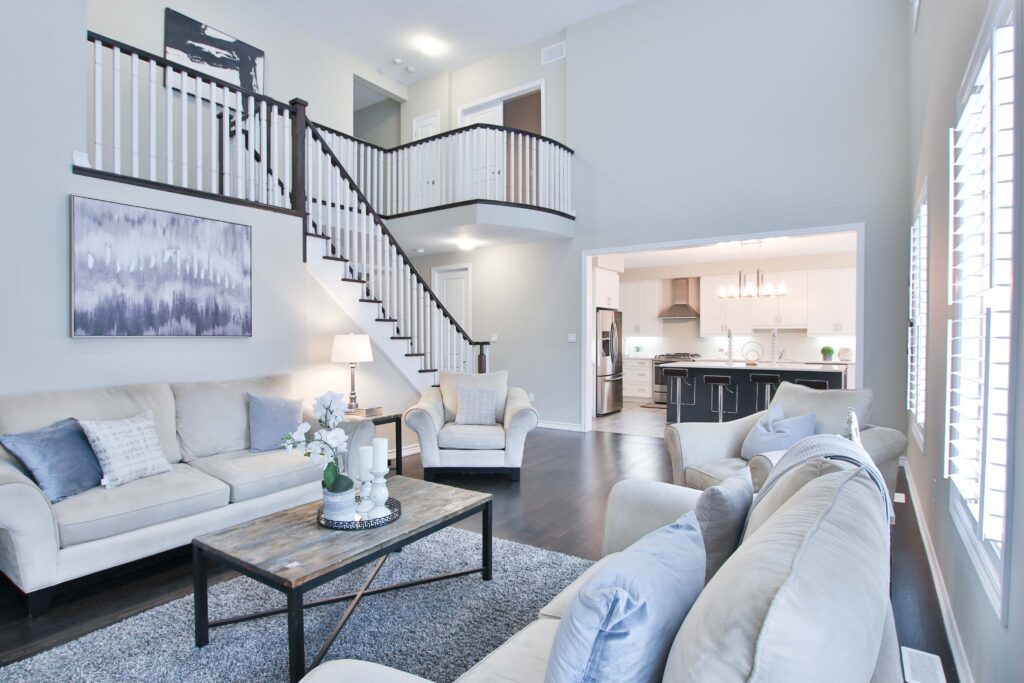
Installation and Setup
Choosing Compatible Devices
When setting up your smart living room, it’s essential to choose devices that are compatible with your existing infrastructure and control systems. Consider the connectivity options, such as Wi-Fi, Bluetooth, or Zigbee, and ensure compatibility with your chosen smart home integration platform. Research and read reviews for each device to ensure that they have a good reputation for reliability and ease of use. By choosing compatible devices, you can avoid compatibility issues and ensure a smooth setup and integration process.
Positioning and Placement
Positioning and placement of your smart devices in the living room can significantly impact their performance and functionality. Ensure that devices like smart speakers or microphones have a clear line of sight to the area where you’ll be giving voice commands. Consider the optimal placement of smart security cameras to maximize their coverage and minimize blind spots. Plan the positioning of smart lighting devices to achieve uniform coverage and desired lighting effects. By taking the time to strategically position and place your smart devices, you can optimize their performance and overall effectiveness.
Connecting to Your Smart Home Network
To ensure seamless communication and control, it’s crucial to connect your smart devices to your smart home network properly. Follow the manufacturer’s instructions for connecting each device to your Wi-Fi network or any other network protocols they support. Ensure that your network is reliable and provides consistent coverage throughout your living room area. If necessary, consider investing in a Wi-Fi extender or a mesh system to enhance network coverage and eliminate dead zones. A robust and stable network connection will ensure reliable and responsive control over your smart devices.
Configuring Devices and Settings
Each smart device will require initial configuration and setup to ensure optimal performance and functionality. Follow the manufacturer’s instructions to set up each device, including connecting them to your chosen smart home integration platform if applicable. Configure settings such as device names, room assignments, and any desired customizations or preferences. Take the time to explore and familiarize yourself with each device’s accompanying app or control interface to fully understand its capabilities. Proper device configuration will ensure that your smart living room operates smoothly and serves your needs effectively.
Testing and Troubleshooting
Once your devices are set up and configured, it’s essential to thoroughly test them and address any potential issues or inconsistencies. Test the connectivity and responsiveness of each device by executing various commands or actions. Ensure that voice commands and app control are functioning as expected and that devices are properly responding to your inputs. If you encounter any issues or inconsistencies, refer to the manufacturer’s troubleshooting guidelines or reach out to their customer support for assistance. Testing and troubleshooting will help you fine-tune your smart living room setup and ensure a seamless and enjoyable user experience.
Smart Home Privacy and Security
Secure Network Connection
When setting up your smart living room, it’s crucial to prioritize the security of your network connection. Protect your Wi-Fi network with a strong password and enable encryption protocols, such as WPA2 or WPA3, to prevent unauthorized access. Regularly check for firmware updates for your router and smart devices to ensure that you have the latest security patches. Consider utilizing a separate guest network for visitors to your home to keep your main network secure. By securing your network connection, you can protect your smart devices and ensure the privacy and security of your living room ecosystem.
Strong Passwords and Security Measures
To further enhance the security of your smart living room, use strong and unique passwords for each of your devices, apps, and online accounts. Avoid using default or easily guessable passwords, and consider using a password manager to securely store and manage your passwords. Enable any additional security measures provided by your devices or smart home integration platform, such as two-factor authentication or biometric authentication. By prioritizing strong passwords and implementing additional security measures, you can significantly reduce the risk of unauthorized access to your smart living room.
Firmware and Software Updates
Regularly check for firmware and software updates for your smart devices, as these updates often include critical security patches and bug fixes. Enable automatic updates whenever possible or set up reminders to check for updates periodically. By keeping your devices up to date, you ensure that they have the latest security enhancements and performance improvements. Firmware and software updates are an essential aspect of maintaining the security and functionality of your smart living room.
Privacy Settings and Data Security
When setting up your smart devices, review and adjust the privacy settings to fit your preferences. Understand what data is being collected by each device or platform and how it is being used. Disable any unnecessary data collection features or settings that you are uncomfortable with. Consider using a virtual private network (VPN) when accessing your smart home network remotely to add an extra layer of privacy and protect your data. By being mindful of your privacy settings and taking steps to secure your data, you can maintain control over your personal information in your smart living room.
Monitoring and Surveillance
With smart security cameras in your living room, it’s essential to strike a balance between security and privacy. Clearly communicate the presence of surveillance cameras to anyone who enters your living room to respect their privacy. Consider adjusting camera settings, such as sensitivity or activity zones, to minimize false alerts or recordings. Regularly review camera feeds and footage to ensure that your living room is secure and to address any potential security concerns promptly. By maintaining vigilance and actively monitoring your smart security cameras, you can effectively protect your living room and maintain a sense of security.
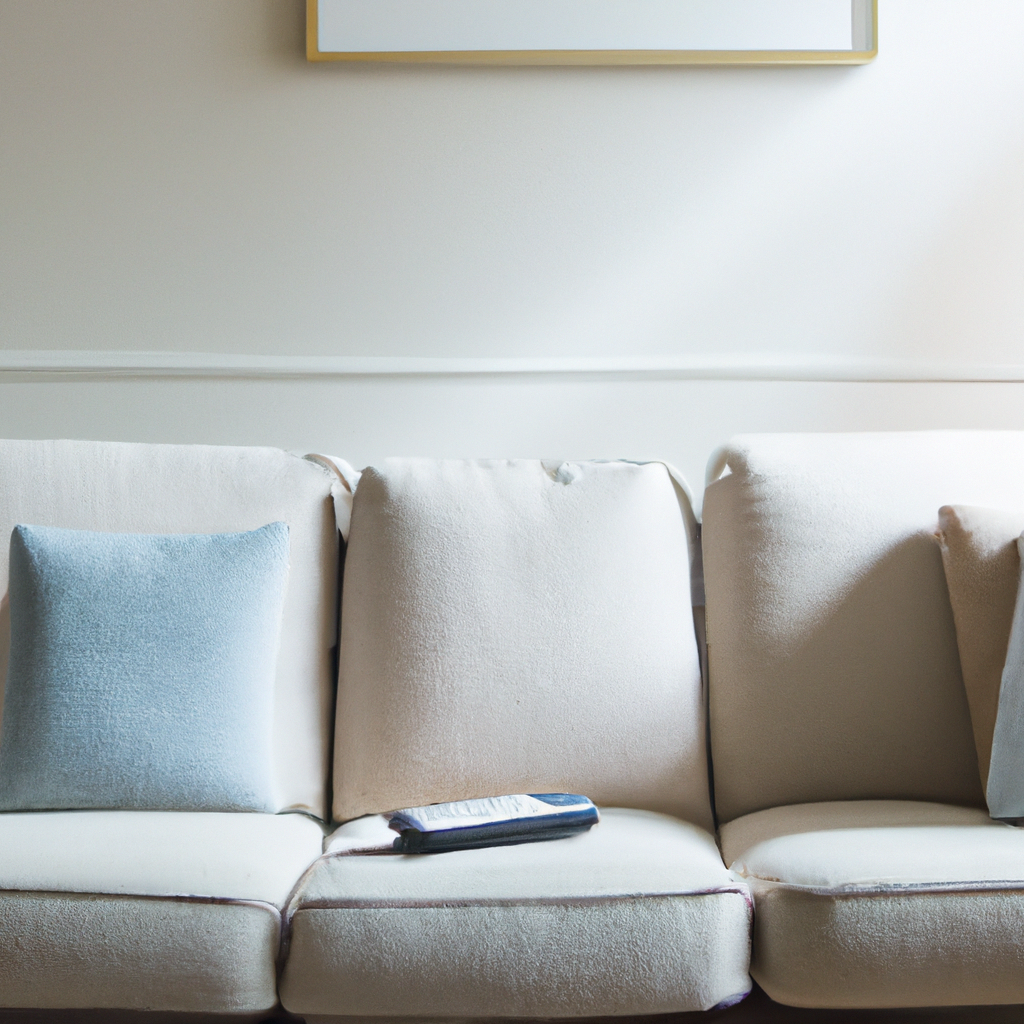
Future Trends in Smart Living Rooms
Artificial Intelligence and Machine Learning
Artificial intelligence (AI) and machine learning technologies are driving significant advancements in smart living rooms. AI-powered assistants, combined with machine learning algorithms, are becoming more intuitive, allowing for more natural user interactions and personalized experiences. From predicting and adjusting your preferred lighting settings to suggesting personalized entertainment recommendations, AI and machine learning are revolutionizing how we interact with and enjoy our living room spaces.
Internet of Things (IoT) Integration
The Internet of Things (IoT) continues to expand, and smart living rooms are at the forefront of this integration trend. As more devices become IoT-enabled, the ability to connect and control them seamlessly becomes easier. From voice-controllable lightbulbs to smart fridges that can order groceries, the possibilities of IoT integration in the living room are endless. This integration allows for a more comprehensive and interconnected living room ecosystem, where devices work together to enhance your daily life.
Augmented Reality and Virtual Reality
Augmented reality (AR) and virtual reality (VR) technologies are transforming the living room entertainment experience. With AR, your living room can become an interactive and immersive space, merging the virtual and physical worlds. Imagine playing a virtual game that brings elements into your living room or having virtual objects interact with your smart devices. VR, on the other hand, offers the ability to transport yourself to new environments and experiences without leaving your living room. These technologies open up new possibilities for entertainment, social interaction, and home automation within the living room.
Smart Furniture and Interiors
The concept of smart furniture and interiors is gaining traction, offering innovative and functional solutions for the modern living room. Smart furniture can incorporate features like built-in wireless charging, integrated speakers, temperature control, or adjustable settings. For example, smart sofas can automatically adjust their reclining positions based on your preferences or biometric data. Smart coffee tables can have built-in touchscreens for entertainment or productivity purposes. With smart furniture and interiors, the living room becomes an intelligent and adaptable space that seamlessly integrates technology into everyday life.
Smart Home Health and Wellness
The integration of health and wellness technologies into the living room is an emerging trend in smart living. With smart devices, you can monitor your well-being, track fitness activities, or even practice meditation and mindfulness exercises without leaving your living room. Devices like smart scales, heart rate monitors, or sleep trackers can provide valuable insights into your health and help you make informed decisions. Additionally, smart living room setups can create environments that promote relaxation and well-being, such as adjusting lighting or playing soothing sounds to create a calming atmosphere. The convergence of smart technology and health and wellness offers new opportunities for improving and maintaining well-being within the home.
